|
|
 |
 |
Secure
Energy? Civil Nuclear Power, Security and Global Warming
Oxford Research Group, March 2007, 56 p.
All over the world the
fortunes of civil nuclear power are rising - why? Many
in government hope that nuclear power would increase
energy security during a time of unstable competition
and surging demand. Some claim nuclear power is key to
reducing global CO2 emissions. For others, it is because
nuclear power opens the door to nuclear weapons.
|
|
This report asks two
questions: how dangerous is nuclear power? And can it
help reduce CO2 emissions? The short answer to the first
questions is 'very': nuclear power is uniquely dangerous
when compared to other energy sources. For the second
question the answer is 'not enough and not in time'.
By comparing the security
consequences of civil nuclear power to its contribution
to tackling
climate change, Oxford
Research Group shows that rather than making a positive
contribution, an expansion of civil nuclear power would:
Make efforts to control the spread of nuclear weapons
much more difficult; Increase the risk of nuclear
terrorism; Make a negligible short-term contribution to
lowering CO2 emissions; Make a negligible contribution
to energy security. Finally, we show that nuclear power
is not needed. Germany, for example, already
more generating capacity from wind-power than the
UK nuclear component and within six years will have more
solar powered capacity too. If the UK pursued similar
policies, by 2020 wind would provide well over six times
and solar three times the generating capacity major
industrial players estimate for a nuclear new build.
extraído
de:
http://www.oxfordresearchgroup.org.uk/publications/briefing_papers/secureenergy.php
|
 |
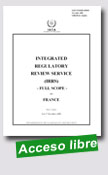 |
Integrated Regulatory Review
Service (IRRS) – Full Scope – to France
IAEA, November 2006, 203 p.
At the request of the Government authorities of
France, an international team of twenty four
experts visited the
Autorité de Sûreté Nucléaire (ASN), the French
regulatory authority for nuclear and radiation safety,
in November 2006 to conduct the first full scope
Integrated Regulatory Review Service (IRRS) mission. The
purpose of this IRRS mission was to facilitate
regulatory improvements in France and throughout
|
|
the world from the
knowledge gained and experiences shared by ASN and the
reviewers through the evaluation of the effectiveness of
the French regulatory authority, its regulatory
framework and its regulatory activities. The facilities
and practices regulated by ASN include nuclear power
plants, research reactors, fuel cycle facilities,
medical practices, industrial and research activities,
waste facilities, decommissioning, remediation and
transport. In addition to the usual IRRS scope, ASN
requested that this IRRS mission also cover ASN public
information practices.
extraído
de:
http://www.asn.fr/sections/accueil/actualites/mission-d-8217-audit-international-8217/
downloadFile/joint_file_flexible_RTE_f0/IRRS_Mission_Report_France_2006.pdf?
nocache=1174469245.07
|
 |
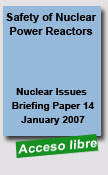 |
Safety of Nuclear Power
Reactors
Uranium Information Centre,
Melbourne, Australia. January 2007
From
the outset, there has been a strong awareness of the
potential hazard of both nuclear criticality and release
of radioactive materials. There have been two major
reactor accidents in the history of civil nuclear power
- Three Mile Island and Chernobyl. One was contained
without harm to anyone and the other involved an intense
fire without provision for containment. These are the
only major
|
|
accidents
to have occurred in more than 12,000 cumulative
reactor-years of commercial operation in 32 countries.
The risks from western nuclear power plants, in terms of
the consequences of an accident or terrorist attack, are
minimal compared with other commonly accepted risks.
Nuclear power plants are very robust.
extraído de:
http://www.uic.com.au/nip14.htm
|
 |
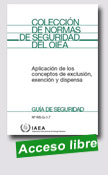
|
This Safety Guide provides guidance on the
application of the concepts of exclusion, exemption and
clearance as established in the International Basic
Safety Standards for Protection against Ionizing
Radiation and for the Safety of Radiation Sources. The
Safety Guide includes specific values for activity
concentrations for both radionuclides of natural origin
and those of artificial origin that may be used
|
|
for bulk amounts of material for the purposes
of applying the concepts of exclusion and exemption.
extraído
de:
http://www-pub.iaea.org/MTCD/publications/PDF/Pub1202s_web.pdf
 |
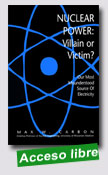 |
The book was written for the
general public, with the aim to inform the public about
both the benefits and the risks of nuclear power. No
scientific training is needed to understand the material
presented there. The book discusses the important
aspects of nuclear power, including the following: the
safety record of nuclear power is outstanding. Radiation
from nuclear plants has not caused any known deaths
worldwide, except at the Chernobyl plant in the Ukraine.
The known death toll from the Chernobyl accident is less
than
|
|
100;
Nuclear power plants emit less radiation than
coal-burning power plants; nuclear power plants emit neither carbon dioxide
(which contributes to global warming and the greenhouse
effect) nor sulfur and nitrogen oxides (which cause acid
rain); there is a good solution to disposing of nuclear
wastes—to bury them deep underground where they will
be harmless. In contrast, there is no solution to
handling the billions of tons of carbon dioxide that
coal and natural gas plants emit yearly, except to
discharge them into the atmosphere; and nuclear power
plants are believed to save thousands of lives annually
in the United States. This is because nuclear plants
replace many coal plants, which emit tiny particulates
into the atmosphere. These particulates are believed to
kill thousands of Americans each year. Nuclear plants
emit no particulate.
extraído
de:
http://nuclearpowervillainorvictim.engr.wisc.edu/cover_small.jpg
|
 |
|
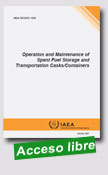
|
Operation
and Maintenance of Spent Fuel Storage and Transportation
Casks/Containers
IAEA,January 2007, 130 p.
Member States have a growing need for casks
for spent fuel storage and transportation. A variety of
casks has been developed and is in use at an increasing
number of sites. This has resulted in an accumulation of
experience that will provide valuable information for
other projects in spent fuel management. This
publication provides a comprehensive review of
information on the cask operation and maintenance
|
|
associated with spent fuel storage. It draws
upon generic knowledge from industrial experience and
applications and is intended to serve as a basis for
better planning and implementation in future projects.
extraído de:
http://www-pub.iaea.org/MTCD/publications/PDF/te_1532_web.pdf
|
 |
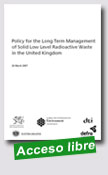 |
Policy
for the long term management of solid low level
radioactive waste in the United Kingdom
DEFRA-UK,26 March 2007, 46 p
This statement of UK
Government and devolved administrations’ (hereafter
referred to as Government) policy for the long term
management of the UK’s solid low level radioactive
waste (LLW) has been developed following public
consultation (refs 1 and 2). This policy statement
amends or replaces relevant parts of the ‘Review of
Radioactive Waste Policy: Final Conclusions (Cm2919)
White Paper published
|
|
in July 1995 (ref 3).
The Supplementary Notes at Annex 1 provide additional
information in support of this statement and Annex 2
lists and explains terminology and abbreviations used in
the statement. Where, appropriate, references are made
to these Annexes in the statement and to other published
material which is listed at the end of this statement.
extraído de:
http://www.defra.gov.uk/environment/radioactivity/waste/pdf/llw-policystatement070326.pdf
|
 |
|
|
|
